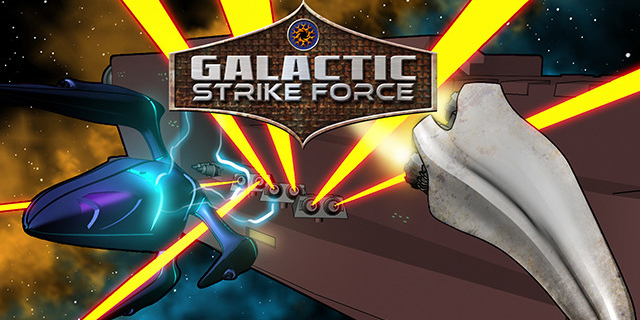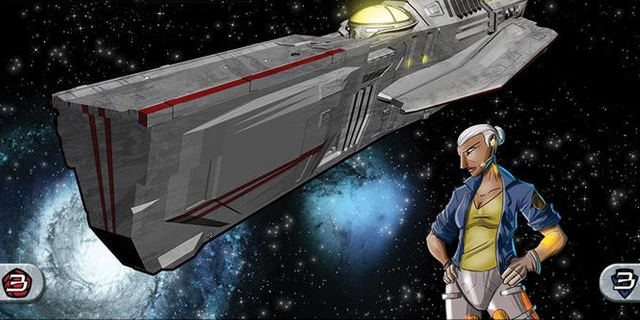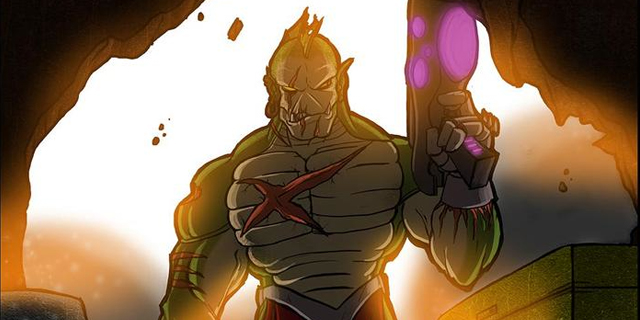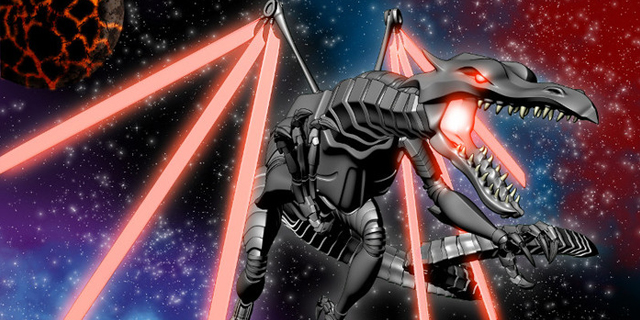
The worst outcome for a first-time game designer is, ironically, capturing lighting in a bottle. Yes, you get all the benefits that come from a brilliant creation that captures the hearts and minds of players. But what can you do for a follow-up that could possibly compare favorably? This was the situation in which Greater Than Games found itself as it had to release its new cooperative space-ship deckbuilding game Galactic Strike Force in the wake of its monumentally-successful cooperative comic book superhero game Sentinels of the Multiverse. Did the team recapture the magic of Sentinels, or did it hit the somewhat inevitable sophomore slump? The answer is a little of both.
In GSF, players represent a loose alliance of scoundrels, outlaws and outcasts who have banded together to defend their galaxy from the forces of oppression and other dangers when nobody else would. Each of ten possible player ships has a starting deck of eight cards specific to that ship representing their style and specialties. Each of five potential opposition forces has a ship deck, a mission deck and a flagship. The remaining cards are collectively known as station cards, and have Strike Force abilities on one side and Opposition abilities on the other. These dual-sided cards are the heart of GSF, as they represent both cards players can buy and cards that hinder their progress in their quest.
Play in GSF is divided into five phases. At the beginning of each phase, any abilities corresponding to that phase (represented by that phase’s icon) happen in an order of the players’ choosing, then players execute one or more specific events. In phase order, players may travel to one of the game’s three randomly-determined sectors, requisition new cards form their respective sectors’ station decks, install techs from their hands to their ships, engage the sector’s Opposition forces in battle and then deal with the aftermath before the cycle begins again.

Each action has consequences, and managing those consequences strategically is where the game lives. Which ships travel to which sectors? That will influence both what cards they will be able to requisition as well as which ships they can engage. Who wants to buy any given card? The timing here will influence the options of others in the same sector as new cards are revealed. Installing techs is usually quick since other players are rarely involved with your decisions, but the battle phase doubles down on options.
By engaging Opposition ships, the players both move towards one of their victory conditions while slowing the advance of one of their loss conditions. If there are ever no Opposition ships in any sector, the players win. However, every unengaged Opposition ship causes the top card of one of that sector’s stations decks to be flipped and played during the aftermath phase. If every deck has its card flipped this way, the sector becomes overrun. An overrun sector is much more hostile to the players, and if all three sectors are overrun the players lose. Thankfully, if no cards are flipped in an overrun sector it returns to its contested status.
The other way players can win is by destroying the enemy flagship, once it is deployed. Each of the five Opposition forces has its own way to deploy its respective flagship and it is entirely possible for the game to end without that ever happening. As with Sentinels, the specific enemy being encountered that game will determine the best tactics so there is definitely some variability here, but none of the flagships are pushovers!

So let’s discuss combat for a minute. During the battle phase, each player must engage one and only one Opposition ship in his or her sector. A player may choose to back up another player who has already engaged an enemy, acting as a secondary engager; doing so usually bestows a small benefit to the primary engager and more importantly does not put the secondary engager at risk. Damage is calculated by comparing a ship’s total weaponry power to its opponent’s total defense power. If greater, the defender loses energy equal to the difference, starting with defensive energy. An Opposition ship that loses all of its energy is scrapped. If a player ever loses all of their energy, they are grounded. Like in Sentinels, a grounded player is not fully eliminated, but obviously if all players are grounded they lose the game.
Many of the mechanics presented in GSF are unique and interesting, although I feel like they were not implemented as well as they could have been. Icons for the phase-specific actions is a welcome step up from the wordy text of Sentinels, but the fact that the Opposition cards are all white text on a dark red background makes reading them more difficult than the more traditional dark text on a light background. Using double-sided cards in a deckbuilding game leads to the interesting innovation of putting discarded cards underneath their respective decks, all but eliminating shuffling at the price of knowing exactly how long you will have to wait before you finally draw that new toy you just purchased. And the tokens… just… tokens, everywhere.

That said, with a cooperative game like this, I can often overlook awkward mechanics if the experience is solid. This is where Sentinels really shone. Despite its wordy nature, it was really easy to imagine yourself as the hero under your control, battling the nefarious villain in the lovingly-detailed comic book world in which the game takes place. And for me, that is where GSF fails the hardest. Maybe it’s the lack of personality follows the shift from individual hero decks to a more generic stock that can be purchased by anyone, or maybe it’s just simply the difference between being able to identify with a hero more readily than being able to identify with a more abstract concept like a ship, but for whatever reason I just don’t “feel” GSF the way I do Sentinels, or even traditional co-ops like Ghost Stories or Forbidden Desert. It’s not a bad game by any means, but there simply isn’t enough heart there to win me over so that I actively want to play more.
Play time is also a factor in my enjoyment if GSF. The box says that the game can be played in about an hour. If that were true every time it would be fine, and for the most part it has, but at least one of my plays lasted twice that and felt every bit like it had outlasted its welcome towards the end. I haven’t played with more than four players yet, but I can’t imagine that session time would get better as more players (up to six) get involved.
Galactic Strike Force retails for $40, with an optional miniatures pack available for $30. It’s worth noting that the GSF box was obviously designed with the minis in mind, as there is otherwise a ton of empty space that isn’t being used if you just stick with the perfectly serviceable cardboard standees.



















